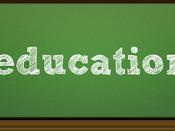According to the Centers for Disease Control and Prevention in 2001, nearly 1.5 million people are believed to have some form of autism. Based on statistics from the U.S. Department of Education, autism is growing 10-17% per year. Within the next decade almost 4 million people will have some type of autism.
Autism is a complex disorder that affects the neurological functioning part of the brain, and typically appears during the first three years of life. This area of the brain is responsible for language and information from the senses. Research suggests that autism is a genetic disorder. Autism is found four times more often in boys, and knows no racial, ethnic, or social boundaries, and family income, lifestyle, and educational levels do not affect the chance of autism?s occurrence.
While there is no cure for autism, knowing and treating the symptoms can keep the condition from going undiagnosed for several years, and allow for treatment.
Signs of an autistic child include: difficulties in developing friendships; problems with make-believe; repeating of words or phrases; obsession with rituals or patterns; poor eye contact; and appearing to be in their own world.
Children who are diagnosed with ?Asperger syndrome? have autistic behaviors, but no problems with language. Children who show no signs of autistic behaviors as a child, but then show signs as an adult might be diagnosed with a ?childhood disintegrative disorder.? An accurate diagnosis is the key to the development and support of a child.
Treatment for autism is aimed at reducing specific symptoms. Because there are such varied symptoms, there is no one set treatment that works for every child. Treatment can include medication, educational/behavioral techniques, and alternate treatment. There is no single medication proven to reduce the symptoms of autism. A majority of children are placed on...


